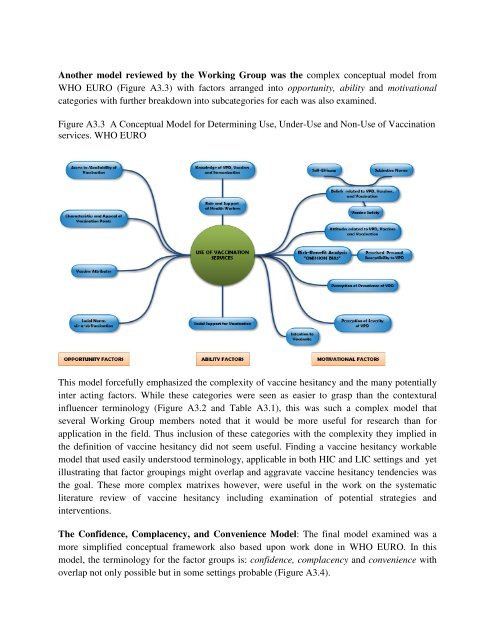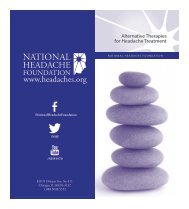2_SAGE_Appendicies_Background_final
2_SAGE_Appendicies_Background_final
2_SAGE_Appendicies_Background_final
You also want an ePaper? Increase the reach of your titles
YUMPU automatically turns print PDFs into web optimized ePapers that Google loves.
Another model reviewed by the Working Group was the complex conceptual model fromWHO EURO (Figure A3.3) with factors arranged into opportunity, ability and motivationalcategories with further breakdown into subcategories for each was also examined.Figure A3.3 A Conceptual Model for Determining Use, Under-Use and Non-Use of Vaccinationservices. WHO EUROThis model forcefully emphasized the complexity of vaccine hesitancy and the many potentiallyinter acting factors. While these categories were seen as easier to grasp than the contexturalinfluencer terminology (Figure A3.2 and Table A3.1), this was such a complex model thatseveral Working Group members noted that it would be more useful for research than forapplication in the field. Thus inclusion of these categories with the complexity they implied inthe definition of vaccine hesitancy did not seem useful. Finding a vaccine hesitancy workablemodel that used easily understood terminology, applicable in both HIC and LIC settings and yetillustrating that factor groupings might overlap and aggravate vaccine hesitancy tendencies wasthe goal. These more complex matrixes however, were useful in the work on the systematicliterature review of vaccine hesitancy including examination of potential strategies andinterventions.The Confidence, Complacency, and Convenience Model: The <strong>final</strong> model examined was amore simplified conceptual framework also based upon work done in WHO EURO. In thismodel, the terminology for the factor groups is: confidence, complacency and convenience withoverlap not only possible but in some settings probable (Figure A3.4).



